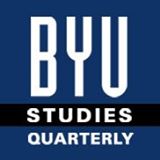BYU Studies Quarterly

Article Title
Jerusalem's Role as a Holy City for Muslims
Keywords
Mormon studies, Islam, Jerusalem, Holy Land
Abstract
When Pope John Paul II made his historic March 2000 pilgrimage to the Holy Land, he did so with the hopes of building bridges and fostering peace. While in Jerusalem, he scheduled a meeting with Jewish, Christian, and Muslim leaders to symbolize his ongoing desire for religious reconciliation. The meeting turned out to be less than conciliatory, especially in regard to Jerusalem. When Chief Rabbi Yisrael Meir Lau of Israel's Ashkenazic community praised the pope for his "'recognition of Jerusalem as its united, eternal capital'," some audience members shouted out that the pope had not recognized Israeli sovereignty over Jerusalem. (The pope supports a long-standing Catholic policy which calls for the internationalization of Jerusalem so that all faiths may worship in peace). Next Sheik Taysir Tamimi, "deputy chief justice of the Palestinian Islamic courts," called for an independent state of Palestine with "its eternal capital" Jerusalem. The pope, who sat with his head in his hands throughout the speeches, responded in his prepared text by stating: "'Religion is the enemy of exclusion and discrimination.... Religion and peace go together.'"
Recommended Citation
Emmett, Chad F.
(2001)
"Jerusalem's Role as a Holy City for Muslims,"
BYU Studies Quarterly: Vol. 40:
Iss.
4, Article 9.
Available at:
https://scholarsarchive.byu.edu/byusq/vol40/iss4/9
